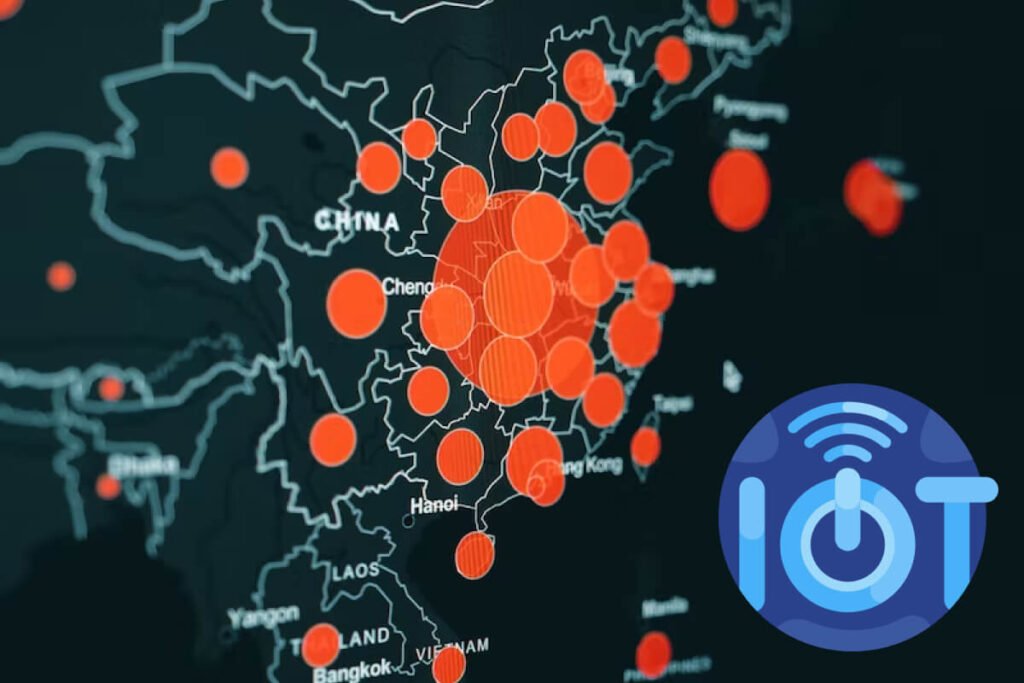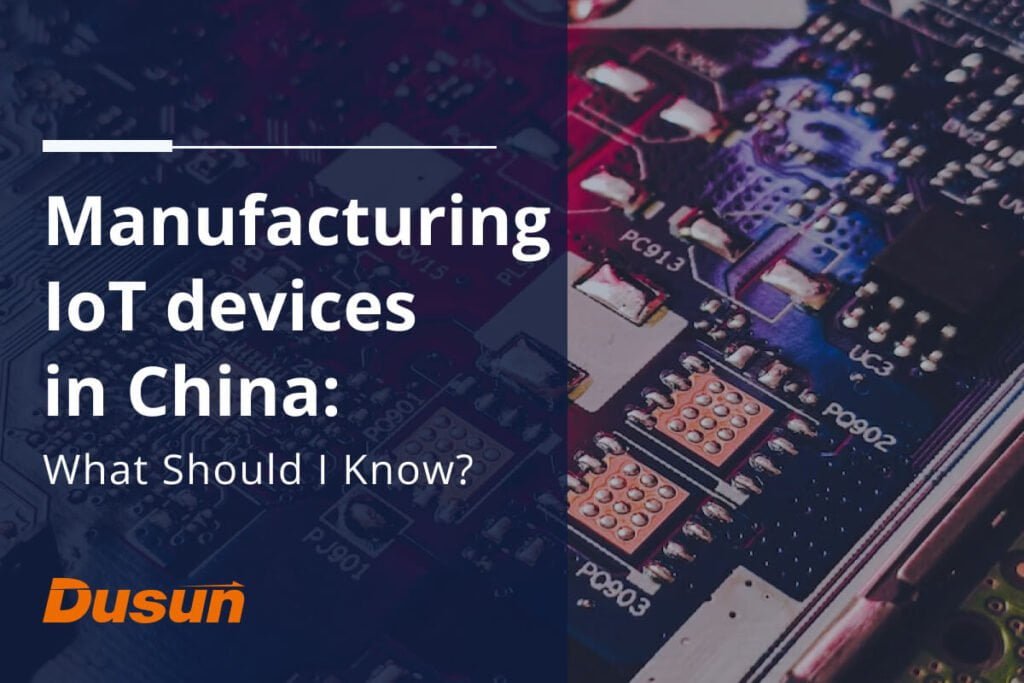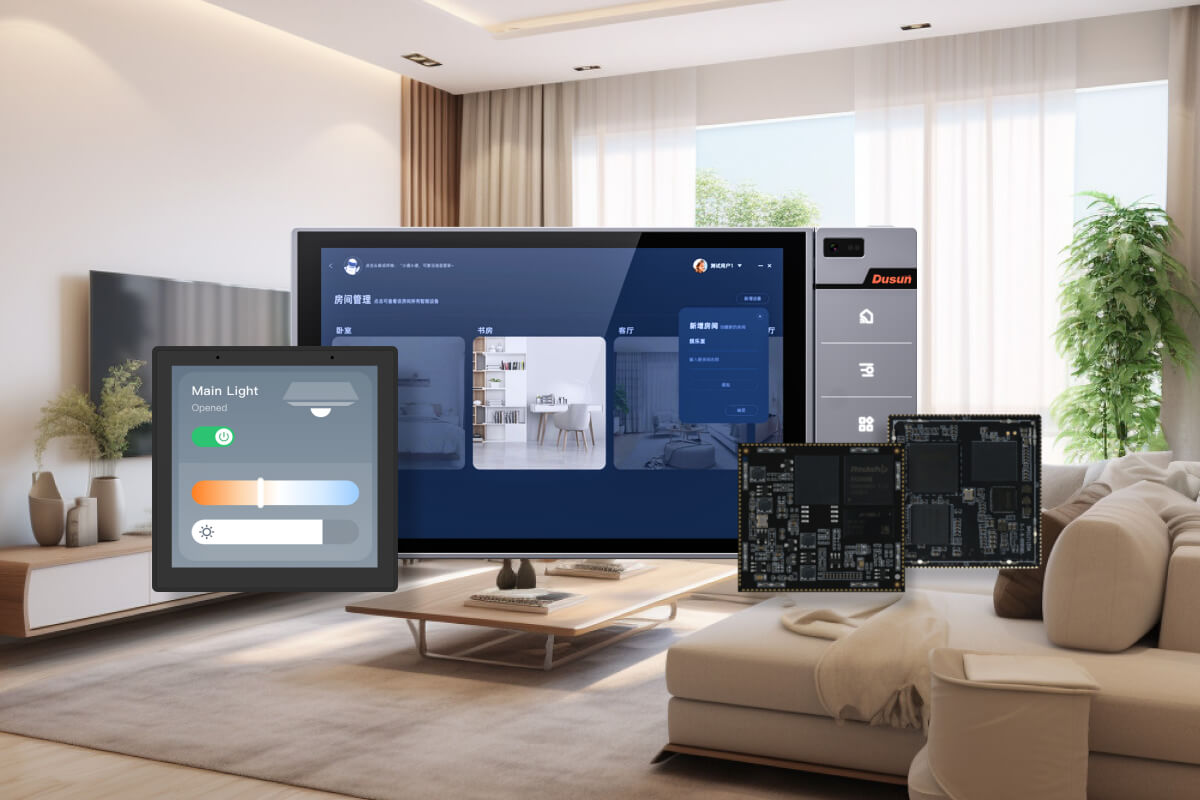Manufacturing, one of the world’s largest industries, cannot help but be impacted by digitalization. Worldwide, economic processes and social interactions have dramatically transitioned due to the IoT’s explosive growth.
Because of its rapidly digitizing sectors and aspirations to pioneer and adopt new technology, China is a key player in this shift. China is committed to fulfilling IoT advancements, utilizing a consistent state policy to affect its numerous markets and key role in global industrial production.
The Internet of Things (IoT) initially had a limited impact in China, but it is now a significant worldwide actor in transforming and shaping foreign trade.
The supply chain of IoT in China

China decided to invest in cutting-edge technology some time ago in order to reduce production expenditures, which for a number of years had been internationally competitive with nations like Vietnam and Cambodia, which had the advantage of having cheaper labor expenses.
Why manufacture IoT devices in China? What are its benefits?
Decreased manufacturing costs
The notion that IoT device manufacturing in China is often more affordable than in most other nations is undoubtedly its most evident benefit. There is a significant variation in operating costs to start with.
Just have a look at the information Deloitte gathered. In the USA, the labor cost is approximately $38 per hour; in Germany, it is over $40; and in Japan, it is about $24. Labor costs slightly more than $3 per hour in China during the same period. The same study demonstrates that India continues to be less expensive, but the problem is that India cannot provide as many skilled manufacturers as China.
The second component that reduces costs is that China has many manufacturers that produce all the necessary components, including sensors, batteries, cables, touch displays, etc.
There were about 2 million factories in 2008. Sadly, there is no information regarding the number of them that produced electrical parts, but even so, this figure is remarkable, isn’t it?
Therefore, you won’t be required to wait several weeks or months for China to develop the products you need because they are already available.
Faster production
You may obtain your IoT devices faster because China has large manufacturing facilities and offers labor at a low cost. To hasten the production chain, merely employ more people, which won’t significantly increase your costs.
Some claim that the rapid production rates of Chinese factories are only attributable to the appalling working conditions: extremely low pay (much lower than what we indicated), excessively lengthy workdays, etc.
Possibilities for market expansion
Manufacturing IoT devices in China is an excellent place to begin if you want to take over the world market because it will enable you to rapidly and affordably launch your brand in the Asian market.
A large number of potential customers are also available in Asia. China, for example, now has a population of over 1.4 billion, and this figure is not expected to decline any time soon dramatically. Producing electronics in China will put you on the doorstep of Asia, a sizable market you shouldn’t ignore.
Superior service
We cannot promise that the manufacturer of your choice will provide amazing customer service; therefore, this is not something you can count on receiving. However, many manufacturers are already in operation, and the rivalry is fierce. Consequently, many manufacturers will make every effort to live up to your requirements and create a positive impression, which is crucial for future collaboration.
Why Not Manufacture IoT Devices in China?
Having trouble finding a factory
Even though there are many factories, it could be difficult to locate a good one. Finding a facility that can produce your goods is crucial in the first place. You may be sure you’ll acquire high-quality gadgets if you choose people who specialize in comparable products because of their knowledge. It is best to avoid companies that manufacture everything at once because doing anything and everything at once frequently produces subpar outcomes.
Furthermore, it’s crucial to confirm that the manufacturer is respectable and doesn’t require its staff to work nonstop. Naturally, it would be fantastic to check out a factory in person and ensure everything is fine, but we anticipate that the journey could be extremely lengthy and costly.
You should make sure quality assurance is integrated into the production process and talk about a reasonable percentage of defective products. Even if the manufacturing workers don’t put in extra hours, you might still have some of them, but this approach will help you cut down on their quantity.
High minimum order amounts could be another issue. If you require a small collection of devices, you can run into trouble because most manufacturers won’t accept small orders.
A dialectal barrier
China’s demographic was already brought up, don’t you recall? Additionally, just about 10 million Chinese individuals are native English speakers, which is another fascinating fact for you. That’s practically nothing compared to the overall population, thus, communicating your goals for what you really want to accomplish, how much it will cost, and other details may be extremely challenging.
Even worse, the culture of China is very distinct from, say, that of Europe. As a result, you will need to be much more cautious than you already are and study all the cultural aspects pertaining to the business connection. It might be difficult with this.
Time-consuming and overpriced shipping
A collection of devices must be transported after they are produced. If you plan to sell them in China, everything will be OK, but if you plan to send them to the USA or Europe, you may need to spend a fortune and wait a while for your purchase to arrive.
Possible issues with quality
Unfortunately, China is hardly known for producing exceptional-quality goods. We don’t intend to imply that everything created there is subpar; rather, we are simply pointing out that this perception still holds true today. As a result, if you choose the wrong factory, you may have problems with the quality of the components and work. And the risk increases as your device becomes more complex.
Possible copyright problems
However, it still costs a lot of money and might be dangerous to safeguard intellectual property in China. You can run into issues with copyrights and trademarks because, even though things are improving, they are still far from perfect. In addition, Chinese IP legislation is much different, so issues could develop precisely because you are unfamiliar with it. You can simply discover your product being offered without your knowledge under a name that sounds nearly identical.
IoT ODM vs IoT OEM: Which one should I choose

If finding an authentic manufacturer is extremely important to you, you might need to spend more time researching the business or even travel to China to see the facility. Websites that offer IoT OEM and IoT ODM can be found by researching what is available on the internet.
How to choose highly qualified providers to work with for your IoT products?
To find out if they manufactured all the devices they are supplying and whether they have any patents or copyrights on the hardware or technology, inquire as to their development history. As for their competencies for IoT OEM/ODM service, find out if they have their own R&D group.
After choosing the manufacturer to proceed further with the IoT products, it is crucial to have a solid understanding of the typical workflow for an IoT project, as well as the typical waiting period for each procedure.
Clearly state your objectives and request a quote.
The more details you give the manufacturer, the more precise the price can be. If the customization of your OEM and ODM devices extends to both the equipment and the applications, you can compile a file with all the necessary information and send it to the supplier for an assessment of the technical issues and the price.
Request that the manufacturer determines the duration of each production process.
The timeline for IoT OEM and ODM projects should take into account the design phase, prototyping process, mold phase (if necessary), sample approval stage, mass production phase, etc. The project’s overall timeline can be kept under control in the event of delays by being aware of the time frame for each activity.
Following the approval of the samples, conduct a trial run before proceeding to large-scale production.
Although the prototypes function brilliantly, certain problems only appear during production. By finding a solution in trial runs as opposed to mass manufacturing, the risk will be reduced. Doing this will help to ensure that the manufacture of your IoT OEM and ODM devices runs smoothly.
How Chinese policy measures are advancing IoT developments
IoT in China was a development in the widespread use of ICT, which the top government authorities recognized as a global trend more than 20 years ago. It was acknowledged as a tool that needed to be mastered for a corporation to succeed in this cutthroat environment. The promotion of IoT advances has been swiftly churned by both regional and national governmental bodies.
What actions would you take if you made the decision to pursue manufacturing in China?
Although there are more drawbacks than advantages on this list, if you still decide to have your products manufactured in China, take the following actions.
Select a reliable factory. Here’s how to go about it:
a.) Attend foreign trade exhibitions, ask for suggestions from industry trade associations, and connect with businesses and individuals in your network to help you focus your search.
b.) Look for manufacturers of products that are similar to yours and read some reviews about them. Make an effort to speak with their former and present consumers.
c.) Look at the nations that these firms export and ship their products to. The manufacturers that produce for the USA and other Western nations have better quality requirements.
d.) Request the licenses and certifications of producers. Documents are typically not a problem for respectable manufacturers, and they are never withheld.
e.) Talk to the manufacturers who have completed all the preceding processes successfully and go over every last detail. Get all the information you need regarding the minimum purchase, costs, production schedule, and other factors.
The decision is then yours to make. Nevertheless, we also recommend visiting a factory, if at all possible, prior to accomplishing this. Before you enter into a contract, it is best to see everything for yourself. Also, as a side note, confirm that the individuals you are forming relationships with can speak English for easier transactions and communications.
Determine the expenditures.
Take this action with extreme caution. We won’t discuss manufacturing costs right now because we believe you took them into account while selecting the manufacturer. Indeed, the subject of this little paragraph is shipping expenses. Before beginning the manufacturing operations, estimate the delivery time as well as the associated costs, customs, and duties to avoid any uncomfortable situations.
Choose a trustworthy local representative.
It is expensive and time-consuming to visit China every time you want to examine the caliber of the work. It won’t benefit you to live there throughout production, however, as you might not be able to monitor the performance on your own and will need to bring some of your team members with you. However, the issue can be resolved by employing a local agent who can oversee quality directly. Only one truly trustworthy individual needs to be located.
Know your legal rights.
Finding a competent lawyer who is fluent in Chinese and who is well-versed in IP law is ideal when it pertains to protecting your brand from all types of infringements. This individual will be of great assistance to you. Before beginning the production process, resolve all copyright concerns. This tactic will not result in your manufacturer stealing your product.
Look into the business culture of China.
There are numerous methods to go about it, including reading online articles, speaking with individuals who have already gone through it, and reading books (for instance, this one). Please try to make a decision, but make sure there are no deficiencies in your cultural understanding.
Final verdict
China is advancing its reputation as a leader in governance in cutting-edge technology like IoT. The Chinese government is reportedly planning to invest more than $1 trillion to introduce technology. It is believed that the IoT component of “Internet Plus,” a component of the “Made in China 2025” plan, has enormous potential to significantly boost the economic growth of the country.
The tremendous rise in smartphone usage in China is a key element influencing the development of the IoT in that nation. Based on infrastructure, application, and sector, the IoT market in China is divided into submarkets. From these points, it should be clear how excellent and advantageous it would be to choose China as your manufacturing location.
The COVID-19 crisis has given this technology more traction. Numerous “conventional” businesses will most likely go out of business due to the current economic crisis, but those who have made investments in new areas of innovation, such as AI, IoT OEM, IoT ODM, and 3D modeling, will have an advantage over their rivals.



















